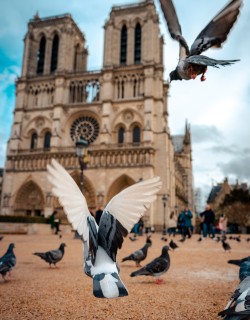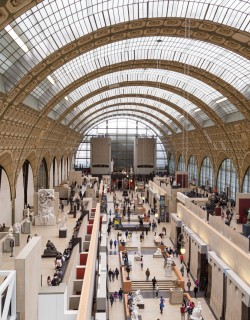IT'S ALMOST ALWAYS THE CHEAPEST AND FASTEST WAY TO GET AROUND TOWN - AND WHAT A MARVEL IT IS!

“Métro, boulot, dodo” (subway, work, sleep). This little alliterative ditty is often employed by Parisians when they talk about the busy rhythm of life in the capital. With 4 million passengers a day and 1.4 billion each year on its 16 lines, le Métro forms the strands of a gigantic spiderweb that ties the City of Lights together. Used by rich and poor, young and old, working and retired, by visitors and inhabitants from every continent, color and creed, Paris’ subway system might even be considered a great equalizer, throwing together (often quite literally) people who might otherwise never even see each other at all.

The dream began in the mid-19th century, with heated debates over some rather far-fetched ideas (such as a raised monorail snaking through the beautiful buildings of central Paris). While the political push-and-pull between the leftist city administration and the rightwing national government dragged on and on and on, London, New York and Budapest were already well on their way to creating their own subterranean transit networks. Finally, in 1898, with the turn-of-the-century Paris World’s Fair approaching, decisions were taken, the work got underway, and in July 1900 le Métro opened with 6 lines.
Hector Guimard’s Fanciful Art Nouveau Métro Signs
Born in Lyon in 1867, Guimard is widely credited with laying the foundation for the Art Nouveau aesthetic, so brilliantly on display in the access gates to the city’s new subway. The commission came from the municipal administration, as part of city’s efforts to spruce things up for the hordes of national and international visitors to the upcoming World’s Fair. He was tasked with creating entrances that would be easily recognizable and “as elegant as possible.” There were a few elements that he had experimented with on recent projects that he now brought to full flourish: an unmistakable reference to nature, a taste for the swoops and swerves of curved lines, and a keen interest in asymmetrical forms without ever sacrificing equilibrium.

He developed two categories for his collection of dramatic entrances: édicule (kiosk) and entourage (enclosure). The first type – of which only two now remain – is characterized by a sweeping fan-like awning made of glass, protecting the stairway that leads down to the platforms. These were commonly referred to as libellules, or dragonflies, because of the canopies’ resemblance to that most romanticized of insects’ wings. In fact, the dragonfly would become one of the iconic images of Art Nouveau. The second variety features two serpentine vertical posts that rise, as though growing toward each other, each topped by a large glowing red orb. The posts are bound by a sinuous elliptical arch, like two great stalks connected by iron limbs. Both genres present a sign that bears the word Métro or Métropolitain in a font that quickly became iconic to the entire Art Nouveau movement itself. There were even three free-standing pavilion-like entrances, seemingly inspired by Japanese pagodas. A total of 154 of Guimard’s elegant entrances were installed all around the city between 1900 and 1912. Eighty-six remain today; many were removed and replaced because, alas, not everyone was a fan.
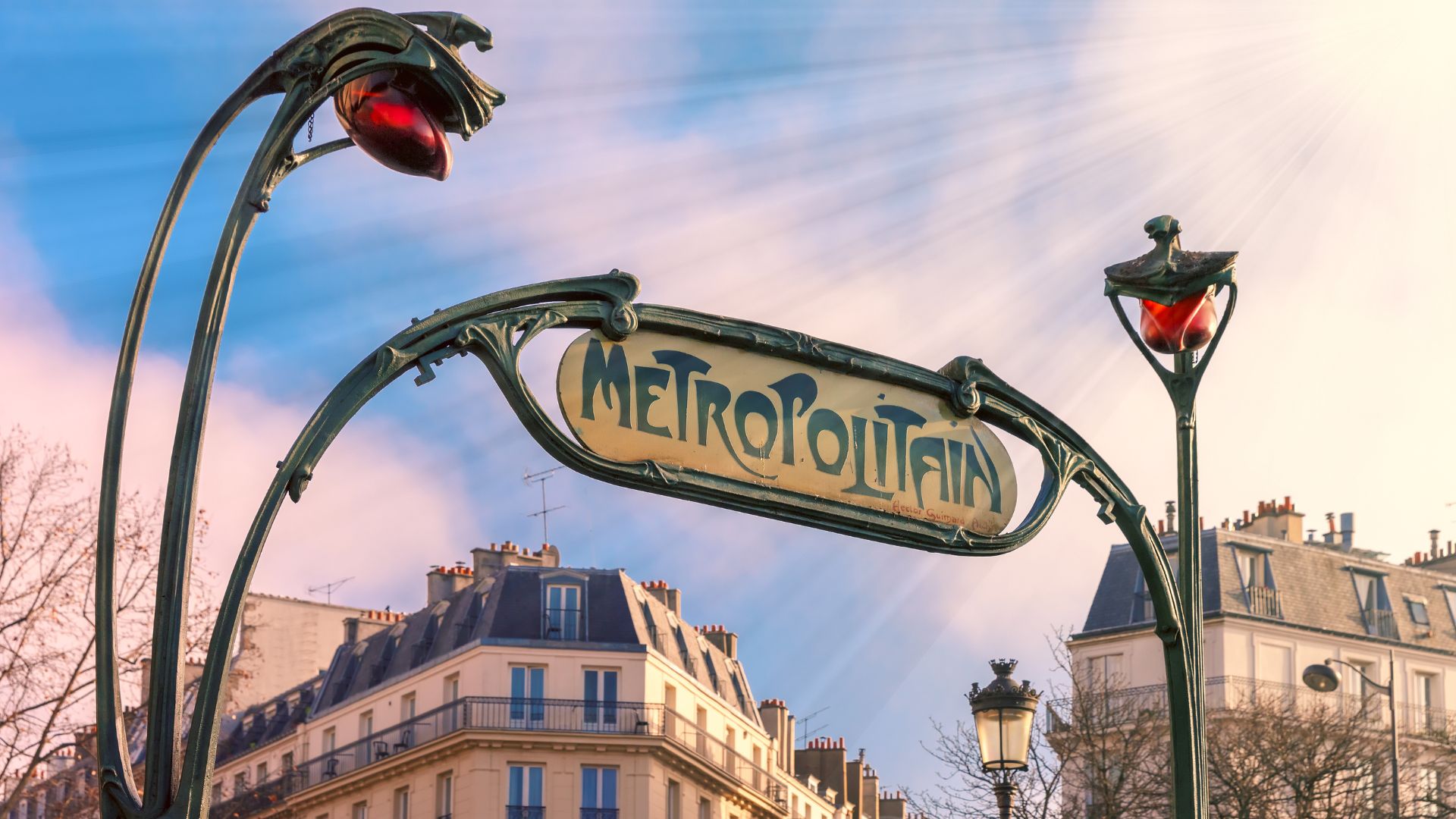
Other designs followed over the years, and if you know what to look for, the distinctions are clear. The first to follow Guimard’s designs were the so-called Val d’Osne style from the 1920s. These present red signs with white block letters, framed by wrought iron that looks rather like a garden gate. Then in the 1930s came the Dervaux model, with an even simpler block-letter font and featuring the sleek lines and stark look of the age of Art Deco. Since the Second World War, “eclectic” is the most appropriate word, with styles ranging from a minimalist illuminated yellow circle bearing the letter “M” to full-blown homages to Guimard’s original style.
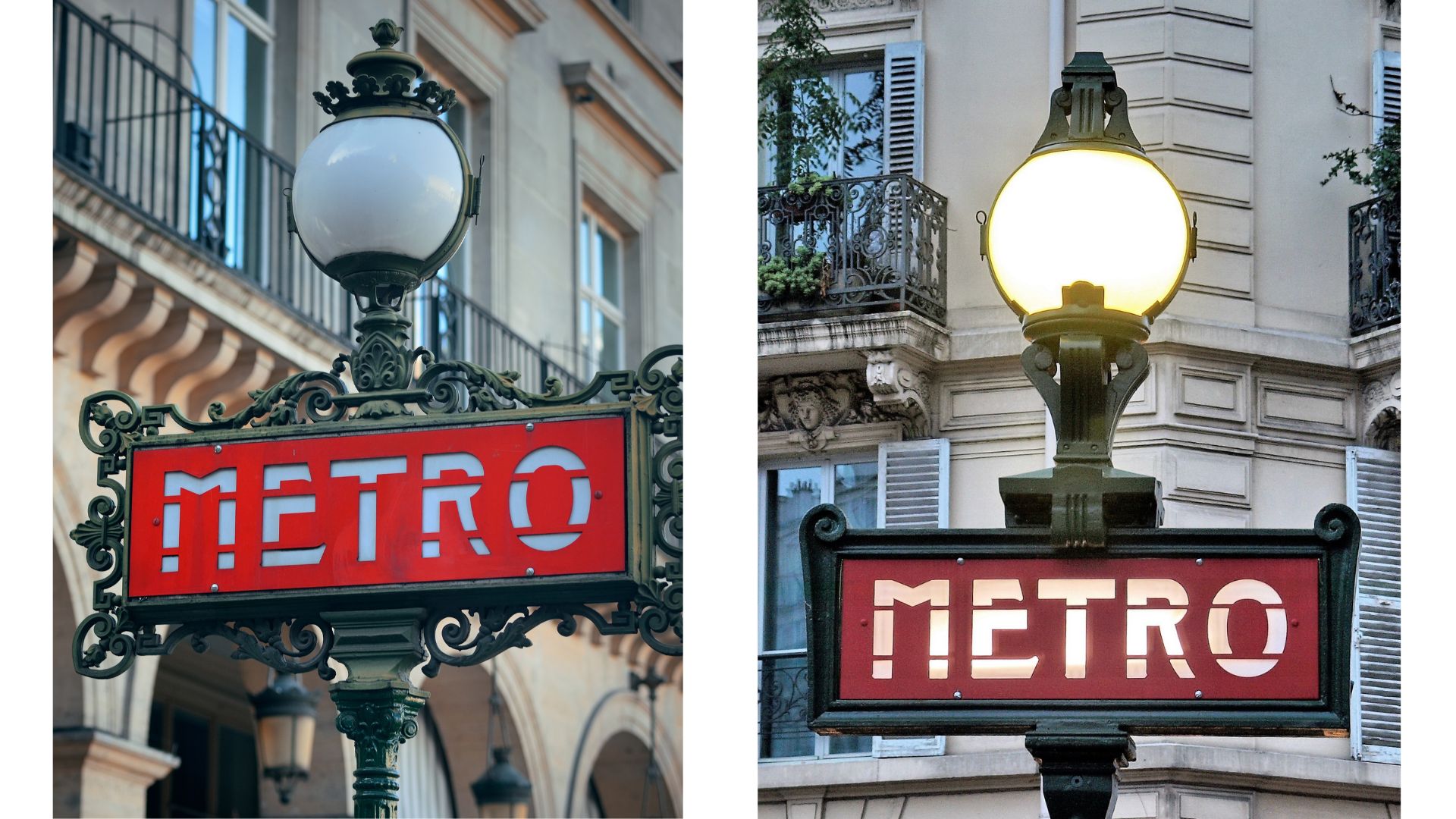
As for the subway itself, the system was immediately so successful that work continued unabated through the first decade of the new century. By 1901, the Métro was carrying 55 million passengers a year; by 1910, that number increased dramatically to 318 million. By the outbreak of the First World War, there were 10 lines in operation, covering 91 km of track through the urban area, with a whopping 467 million people using the system annually.
And it has continued to grow, nearly continuously, ever since. New lines have been added, existing ones have been extended, and there has been an almost constant program of renewal in the stations. There are several stations worth visiting for the sheer aesthetic pleasure. Here are the three we go out of our way to visit!
- ABBESSES (Montmartre, Line 12) Diving down 300 feet below street level, this is Paris’ deepest station. It proudly presents itself with one of the three surviving Guimard fan-like édicule entrances, making it perhaps the most photographed one in the city. Here in this old-time postcard-perfect setting, it seems as though time has been held in an Art Nouveau soap bubble, keeping it all safe for posterity, as enchanting now as it was a century ago.
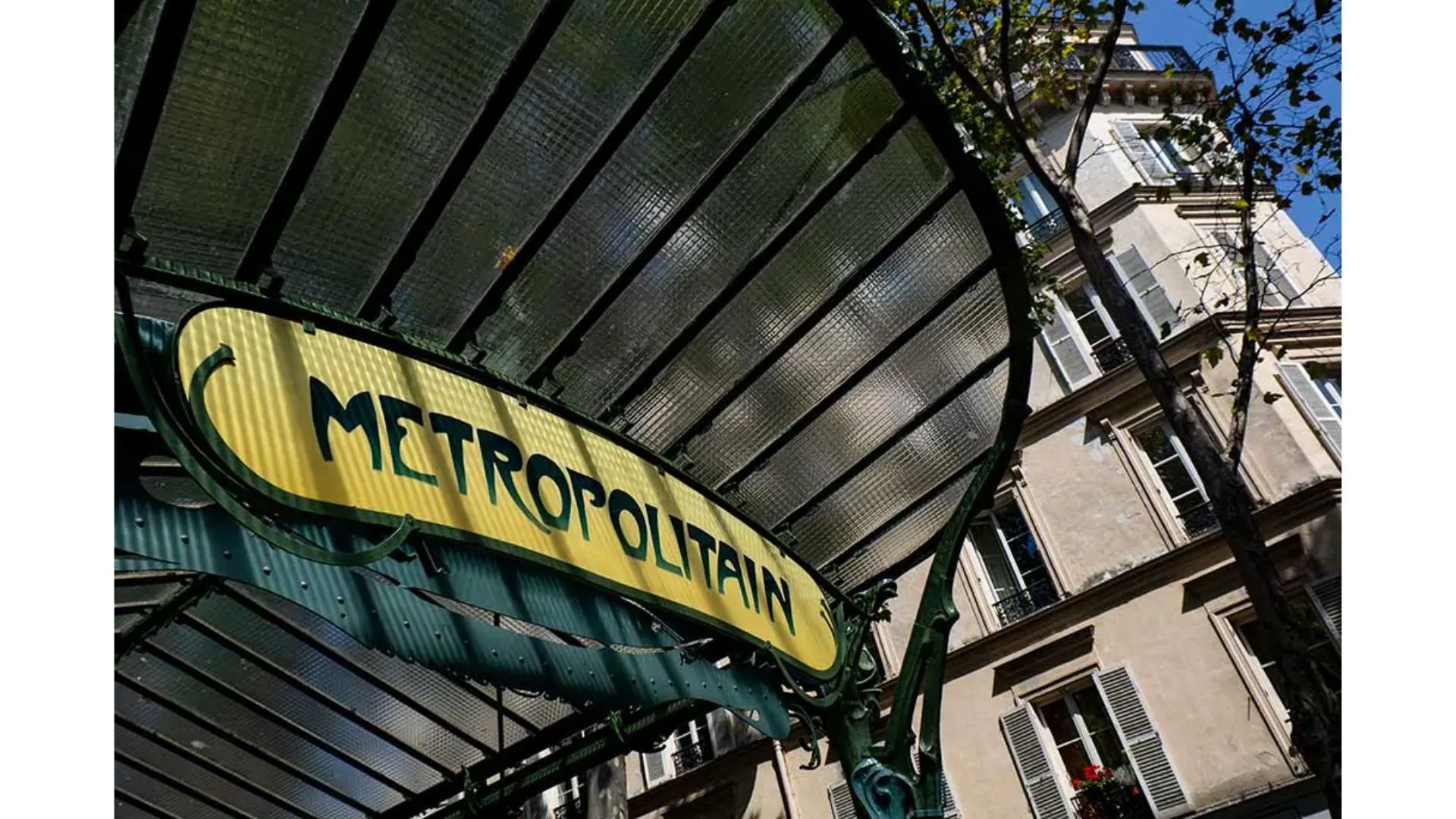
- FRANKLIN D. ROOSEVELT (Champs-Élysées, Lines 1 and 9) Originally denominated Marbeuf-Rond Point, this is where builders first began swinging their picks and spades, making this the city’s very first station. Following World War Two, it was renamed in honor of the wartime American president, as a grateful homage to the sacrifice of so many US service men and women during those dark days. Completely renovated in 2011, the Line 1 station now sports a spiffy modern look, featuring deep mustard yellow walls and bronze-colored lamps and ceiling panels. It is somewhat reminiscent of a swanky New York hotel lobby bar. Très chic!
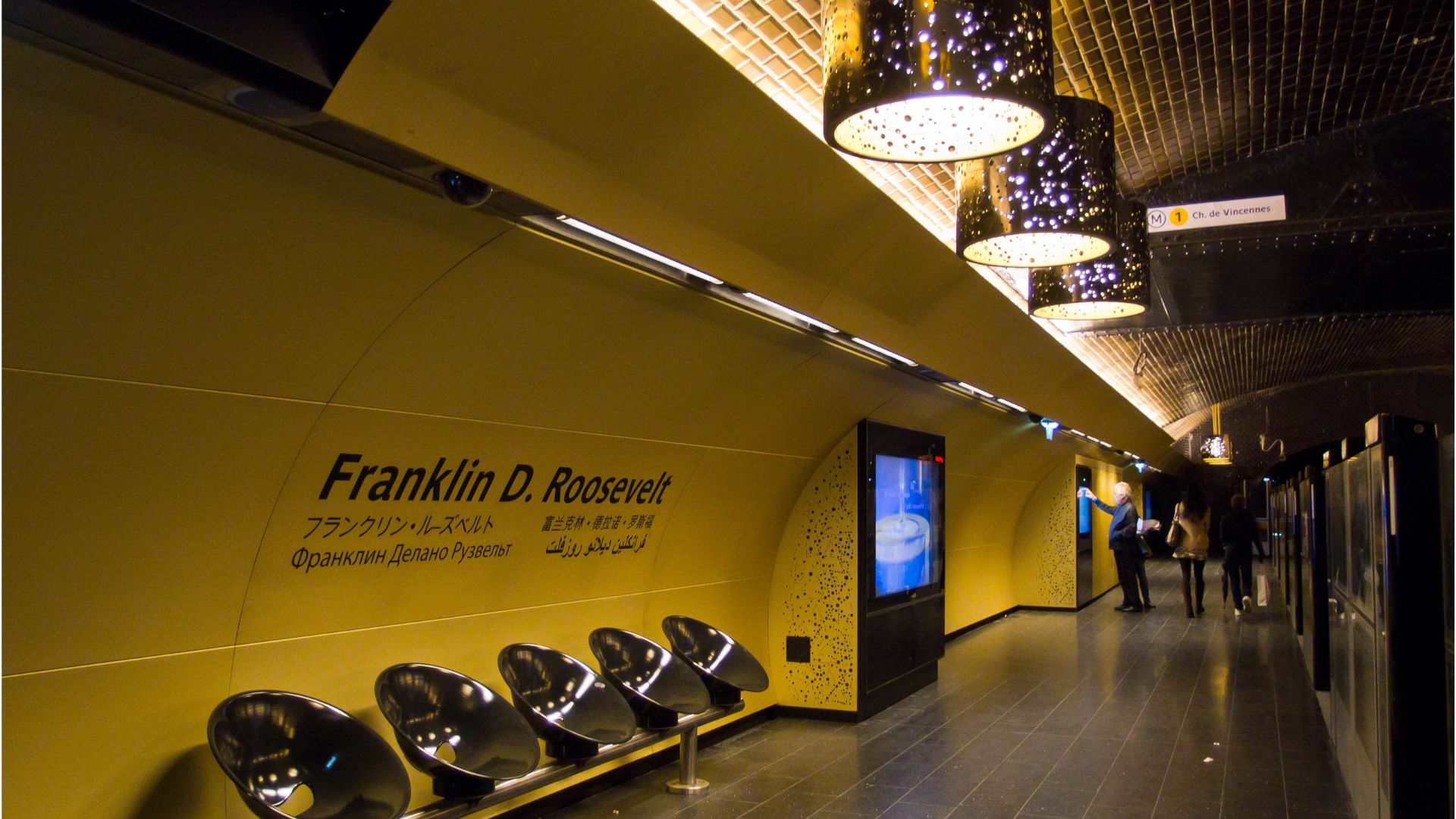
- ARTS ET MÉTIERS (Le Marais, Lines 3 and 11) This station takes its name from the nearby National Conservatory of Arts and Trades. The Conservatory was originally created at the end of the 18th century as a center for higher learning for the formation of young people and to develop revolutionary France’s scientific and technological capacity. To celebrate the institution’s bicentennial in 1994, the Line 11 platform was utterly transformed. Beloved Belgian cartoonists Benoît Peeters et François Schuiten were engaged to design something fantastical that referenced the Conservatory. What they came up with is simply fantastic! There is a distinct retro-futurist feel to it all, reflecting what a forward-thinking student at the Conservatory in the early 20th century, when the Métro was just being built, might have imagined a future submarine would look like. Its gaping fish-bowl faux portals, along with the copper plates and prominent exposed nuts and bolts, will have you feeling as though you had just boarded the Nautilus and were about to meet Captain Nemo from Jules Verne’s One Hundred Leagues Under the Sea. You’ll certainly have no difficulty understanding why so many Parisians hold this to be the most delightful and intriguing Métro station in the city.


